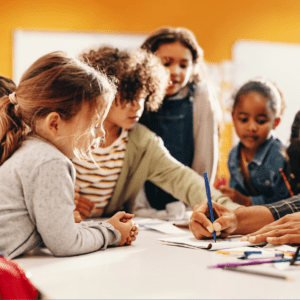In the education landscape, one aspect that significantly influences students’ academic success and social development is the quality of their relationships with teachers. Strong student-teacher relationships can enhance students’ engagement, motivation, and resilience, creating a positive learning environment. But how can teachers build such relationships? This article outlines some simple, yet effective strategies for fostering strong connections with students.
The Power of Personal Connection
Getting to know your students on a personal level is the first step towards building strong relationships. Show genuine interest in their lives outside the classroom. Here’s how:
- Learn About Their Interests: Find out what your students are passionate about. This could be anything from sports, music, art, to their favorite books or movies. Incorporating these interests into lessons can make learning more engaging and relatable.
- Understand Their Backgrounds: Learn about your students’ cultural, familial, and socioeconomic backgrounds. This understanding can provide valuable context for their behavior and academic performance and help you tailor your teaching to meet their needs.
Communication is Key
Effective communication forms the backbone of any strong relationship. It’s essential to establish clear, open, and respectful communication with your students.
- Listen Actively: When students feel heard, they feel valued. Practice active listening by giving students your full attention when they speak, showing empathy, and providing thoughtful responses.
- Provide Constructive Feedback: Regularly provide feedback that focuses on the process and effort, not just the outcome. This approach can help students understand that making mistakes is a part of learning, fostering a growth mindset.
Create a Positive Classroom Environment
The classroom environment plays a significant role in fostering strong student-teacher relationships. A positive, inclusive, and supportive classroom can make students feel safe and valued.
- Promote a Sense of Belonging: Foster an inclusive classroom where every student feels valued and accepted. Celebrate diversity and encourage students to share their thoughts, ideas, and experiences.
- Set Clear Expectations: Clearly communicate your expectations regarding behavior and academic performance. This clarity provides a sense of structure and helps students understand what they need to do to succeed.
- Model Respect: Show respect to all students and ensure that respect is a shared value in your classroom. This mutual respect can create a positive learning environment conducive to building strong relationships.
Conclusion
Building strong relationships with students is an ongoing process, but the rewards are immense. Through personal connection, effective communication, and a positive classroom environment, teachers can foster relationships that not only enhance academic success but also contribute to students’ social and emotional development.
Frequently Asked Questions
Q: Why are student-teacher relationships important?
A: Strong student-teacher relationships can enhance students’ academic success, engagement, motivation, and resilience. They can also contribute to students’ social and emotional development, creating a positive learning environment.
Q: How can teachers build strong relationships with students?
A: Teachers can build strong relationships with students by getting to know them personally, establishing clear and respectful communication, and creating a positive, inclusive, and supportive classroom environment.
Q: How can teachers use students’ interests in teaching?
A: Teachers can incorporate students’ interests into lessons to make learning more engaging and relatable. This approach can also show students that their teachers value their passions, further strengthening the student-teacher relationship.
Q: What role does communication play in building student-teacher relationships?
A: Effective communication forms the backbone of any strong relationship. By actively listening to students, providing constructive feedback, and clearly communicating expectations, teachers can establish a strong connection with their students.






